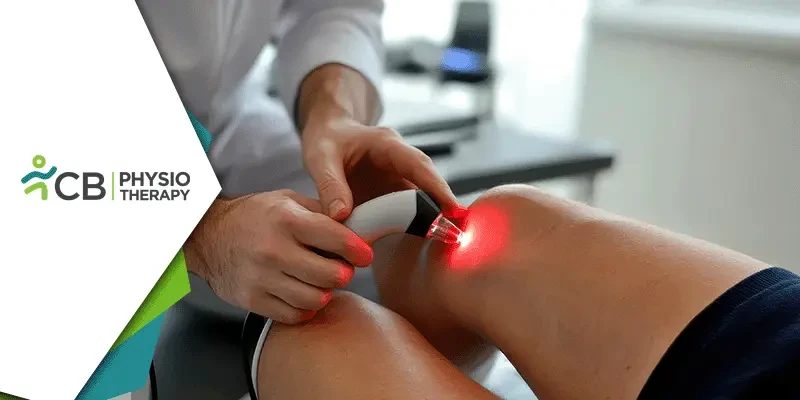Class 4 laser therapy has gained significant attention in recent years for its therapeutic potential in physiotherapy. This non-invasive treatment option is known for its ability to deliver a high-powered laser beam deep into tissues, stimulating healing processes at the cellular level. It is used to treat various musculoskeletal, neurological, and soft tissue conditions common in physiotherapy. In this blog, we will explore the effects of Class 4 laser therapy on conditions treated by physiotherapists, the science behind its therapeutic benefits, and its applications in rehabilitation.
Understanding Class 4 Laser Therapy
Laser therapy has been used in medical treatments for decades. The classification of lasers is based on their power output, with Class 4 lasers being the most powerful among those used for therapeutic purposes. While low-level laser therapy (LLLT) or Class 3 lasers have been widely used in physiotherapy, Class 4 lasers deliver much more power, allowing them to penetrate deeper tissues and treat a wider range of conditions more effectively.Class 4 lasers are defined by their ability to emit laser beams with power levels exceeding 500 milliwatts (mW). The increased power allows these lasers to deliver energy deep into muscles, ligaments, and tendons, making them suitable for treating acute and chronic conditions where deeper tissues are involved.
The Science Behind Class 4 Laser Therapy
Class 4 laser therapy operates through a process called photobiomodulation. This involves the use of specific wavelengths of light to penetrate the skin and stimulate cellular processes. When the laser light is absorbed by cells, it interacts with the mitochondria, the energy-producing organelles in cells. This stimulates the production of adenosine triphosphate (ATP), which is crucial for cellular repair and regeneration.Additionally, Class 4 laser therapy increases circulation and reduces inflammation by stimulating vasodilation and enhancing lymphatic drainage. These effects help to reduce pain and accelerate the healing process, making it a valuable tool in physiotherapy for managing musculoskeletal injuries, post-surgical rehabilitation, and chronic pain conditions.
Conditions Treated by Class 4 Laser Therapy
1: Muscle and Ligament InjuriesOne of the most common uses of Class 4 laser therapy is for the treatment of muscle and ligament injuries. Sprains, strains, and muscle tears can cause significant pain and inflammation. The deeper penetration of Class 4 lasers helps stimulate the healing of damaged tissues by increasing cellular energy, reducing inflammation, and improving blood flow to the area. This makes it particularly effective for athletes recovering from sports injuries, as well as individuals dealing with overuse injuries like tendonitis.
2: Arthritis and Joint Pain
Osteoarthritis and rheumatoid arthritis are chronic conditions that cause pain, swelling, and stiffness in the joints. Physiotherapists often incorporate laser therapy as part of the treatment plan for arthritis patients to help manage pain and improve joint mobility. Class 4 laser therapy can reduce inflammation in the affected joints, promote cartilage repair, and decrease the sensation of pain by modulating pain signaling pathways in the nervous system.
3: Neuropathic Pain
Class 4 laser therapy has also shown promise in managing neuropathic pain, which arises from damaged or dysfunctional nerves. Conditions like diabetic neuropathy, post-surgical nerve pain, and sciatica can be particularly difficult to treat through traditional means. However, the deep-tissue effects of Class 4 lasers allow physiotherapists to target the affected nerves and tissues directly.
4: Back Pain and Disc Injuries
Back pain, especially lower back pain, is one of the most common reasons people seek physiotherapy. It can stem from a variety of causes, including muscle strain, herniated discs, and degenerative disc disease. Class 4 laser therapy is highly effective in reducing back pain by addressing both the muscular and disc-related components of the problem. The therapy helps reduce muscle spasms, inflammation, and pain associated with disc injuries, allowing patients to return to normal function more quickly.
5: Post-Surgical Rehabilitation
After surgeries like knee replacements, shoulder surgeries, or spinal fusions, the body undergoes a significant healing process that can be prolonged and painful. Physiotherapy plays a vital role in helping patients regain mobility and strength after surgery. Incorporating Class 4 laser therapy into post-surgical rehabilitation protocols can accelerate recovery by reducing post-operative pain, swelling, and inflammation.
6: Tendinopathies and Overuse Injuries
Conditions like Achilles tendonitis, plantar fasciitis, and rotator cuff injuries are common in both athletes and the general population. These conditions often result from repetitive strain or overuse and can take a long time to heal due to the lack of blood flow to these areas. Class 4 laser therapy can stimulate blood flow to tendons and ligaments, increasing oxygen and nutrient delivery to the damaged tissues.
Benefits of Class 4 Laser Therapy in Physiotherapy
The advantages of using Class 4 laser therapy in physiotherapy are numerous:1: Non-Invasive and Painless: One of the most appealing aspects of laser therapy is that it is a non-invasive treatment that doesn’t require medication or surgery. Most patients find it painless and comfortable.
2: Faster Recovery Times: Class 4 laser therapy helps to accelerate the healing process, allowing patients to recover faster from injuries and surgeries.
3: Reduced Inflammation and Pain: The ability of laser therapy to reduce inflammation and modulate pain makes it an excellent option for managing both acute and chronic conditions.
4: Versatile Applications: From muscle injuries to nerve pain, arthritis, and post-surgical rehabilitation, Class 4 laser therapy can be used to treat a wide range of conditions.
5: Minimal Side Effects: Unlike some other therapies, Class 4 laser therapy is generally safe with minimal side effects when applied correctly by trained professionals.
Class 4 laser therapy is proving to be a valuable tool in the field of physiotherapy, offering an effective and non-invasive treatment option for a variety of musculoskeletal and neurological conditions. Its ability to promote deep tissue healing, reduce inflammation, and modulate pain makes it an essential component of modern physiotherapy practice. Whether used in conjunction with other therapies or as a standalone treatment, Class 4 laser therapy is helping patients achieve faster recovery times and improved quality of life.

